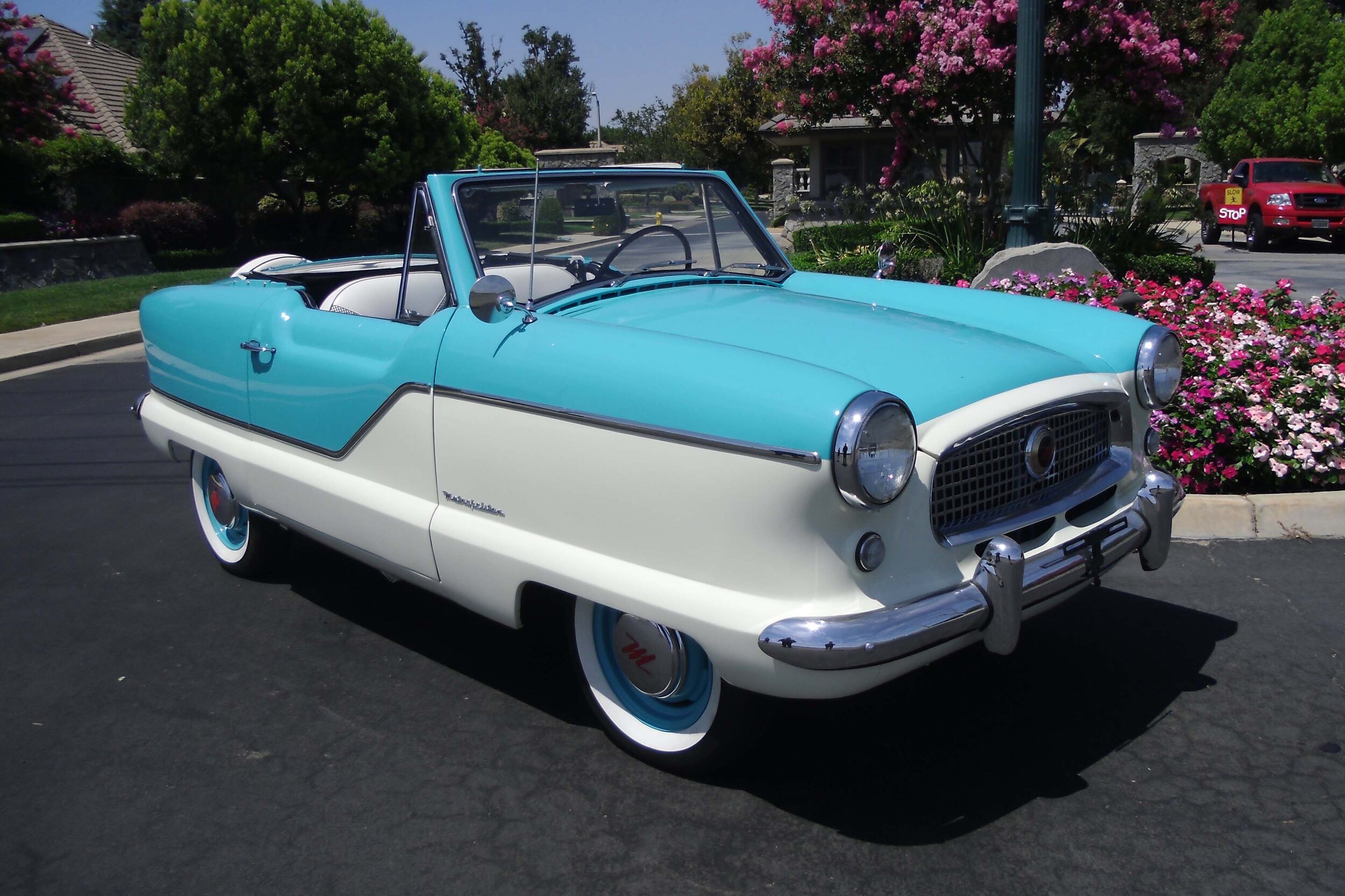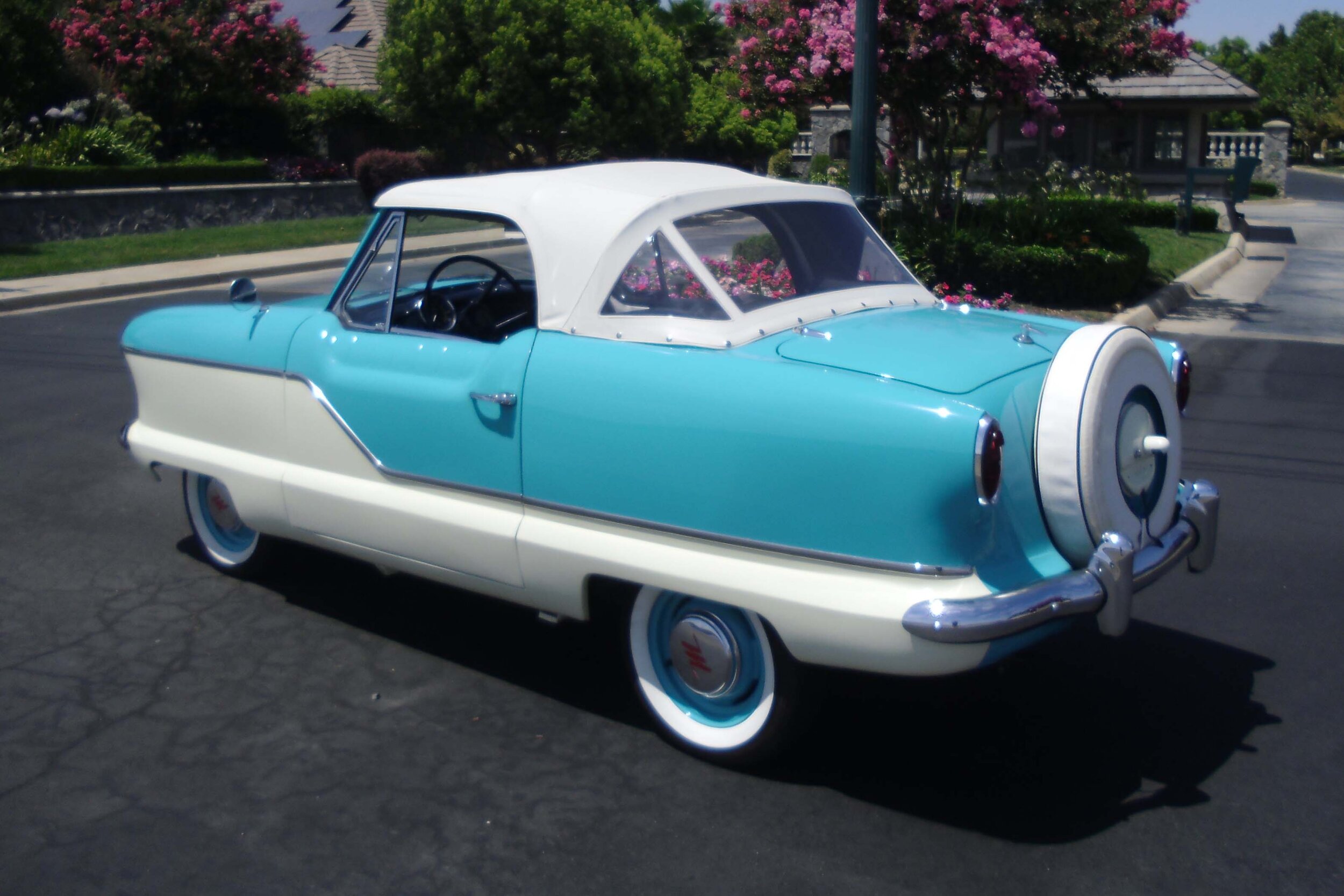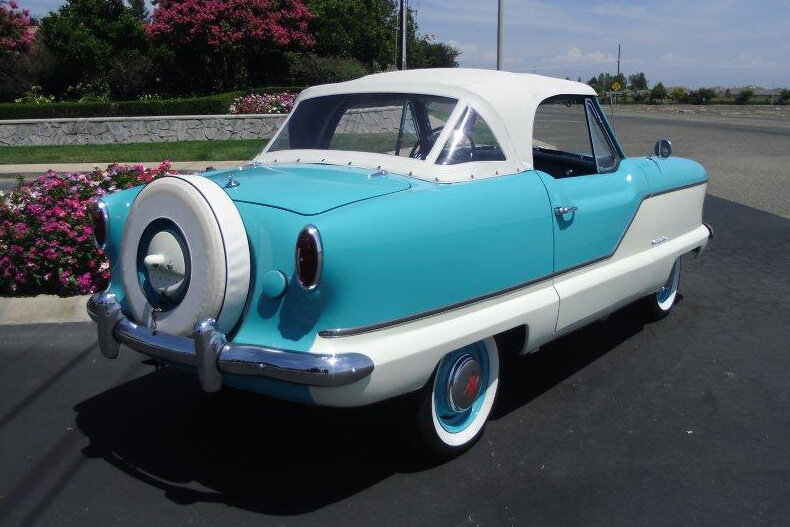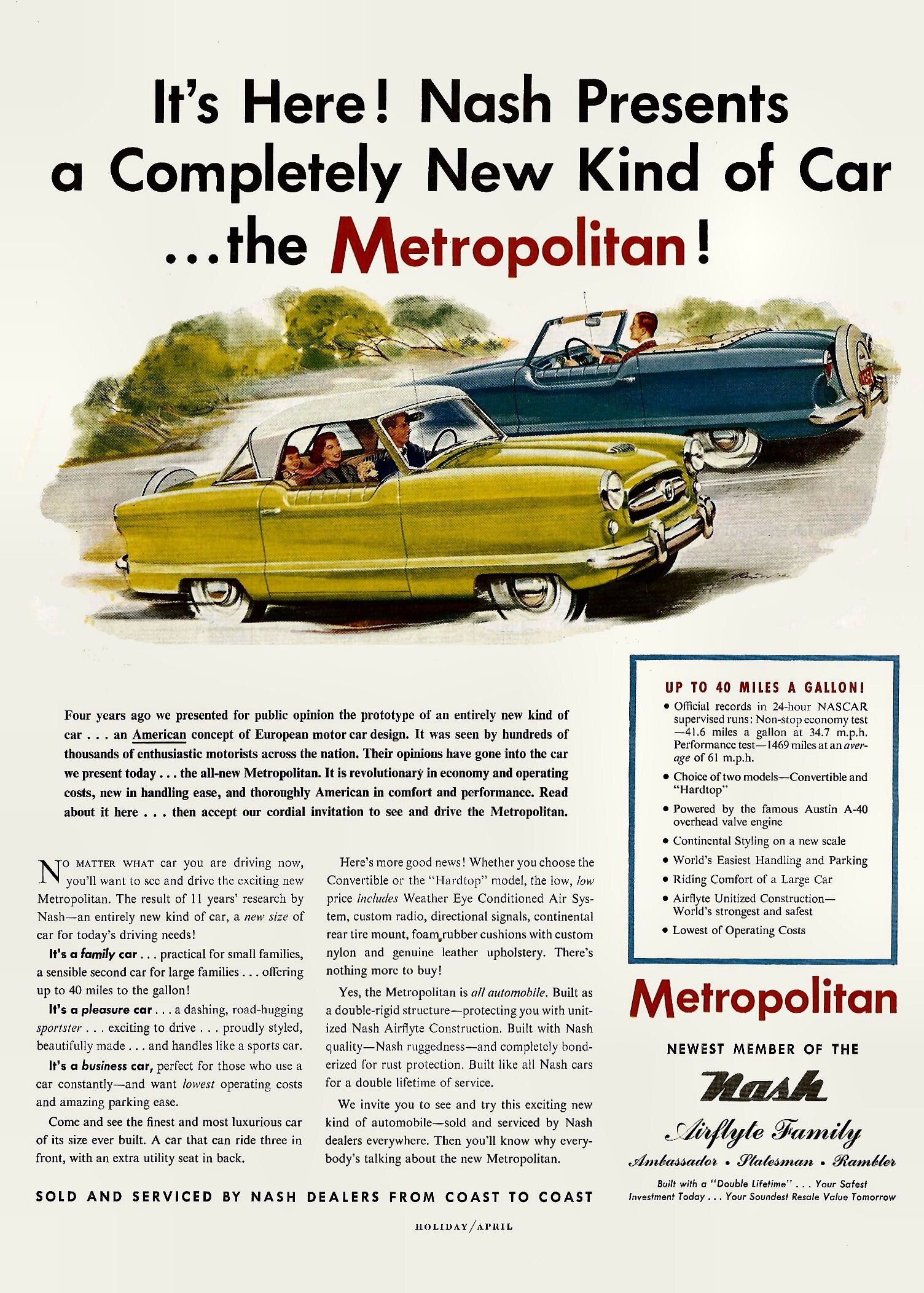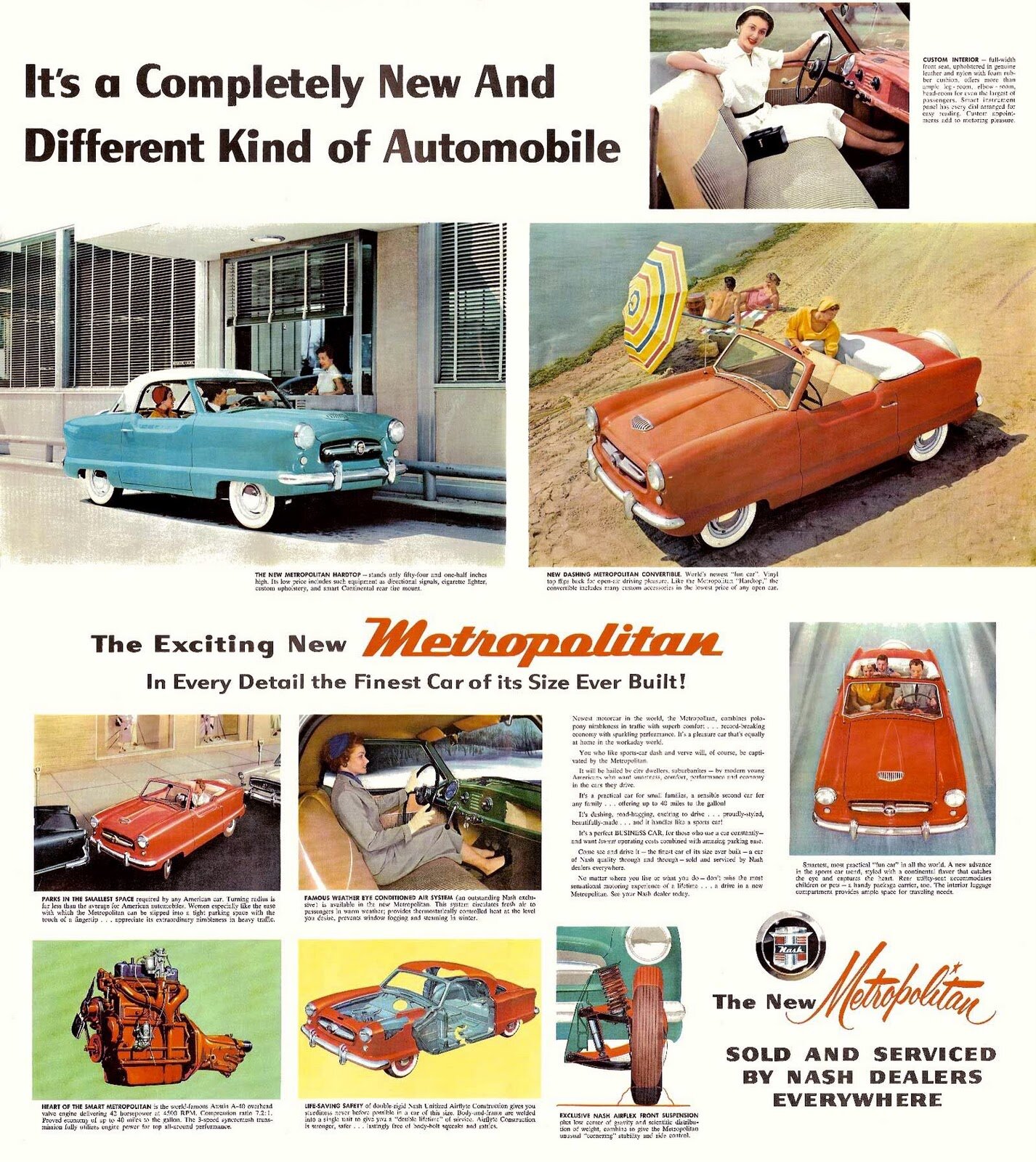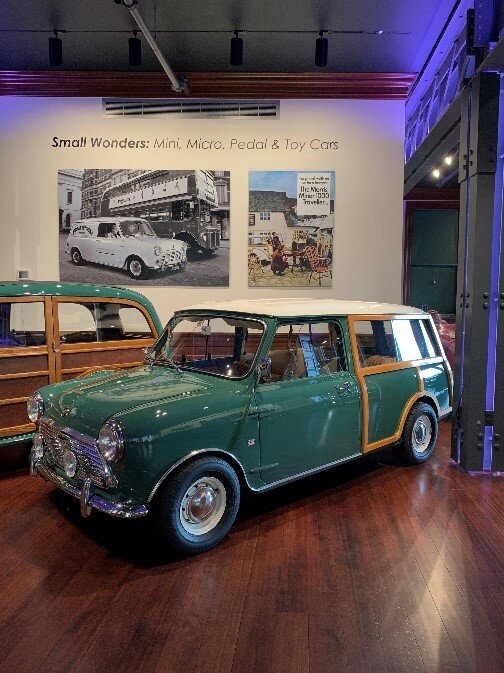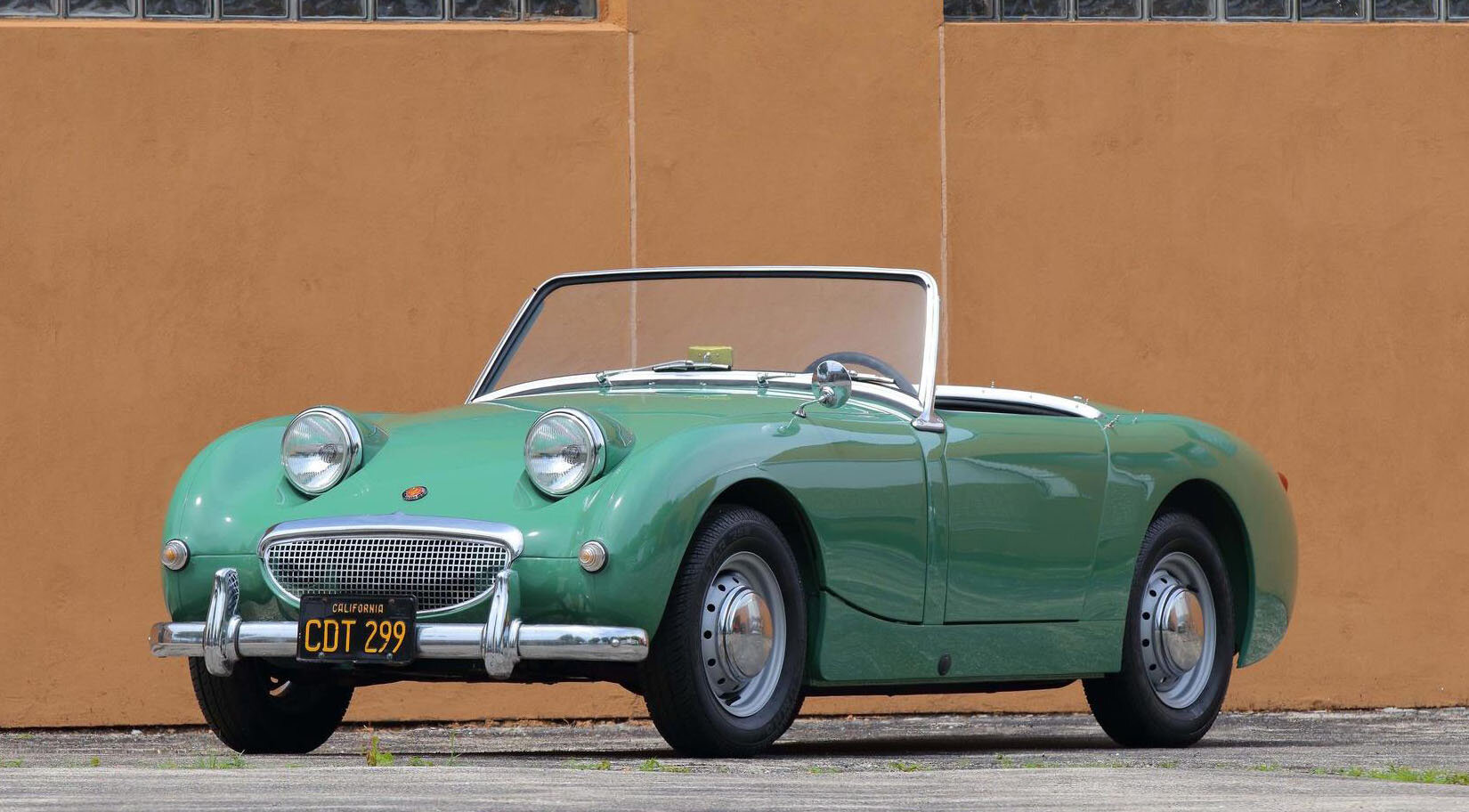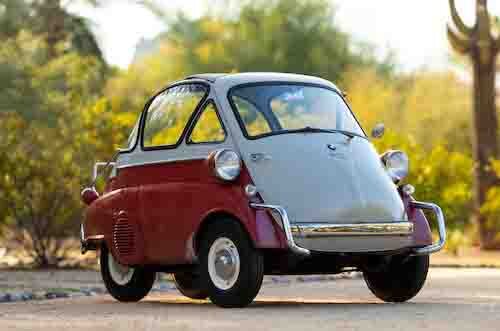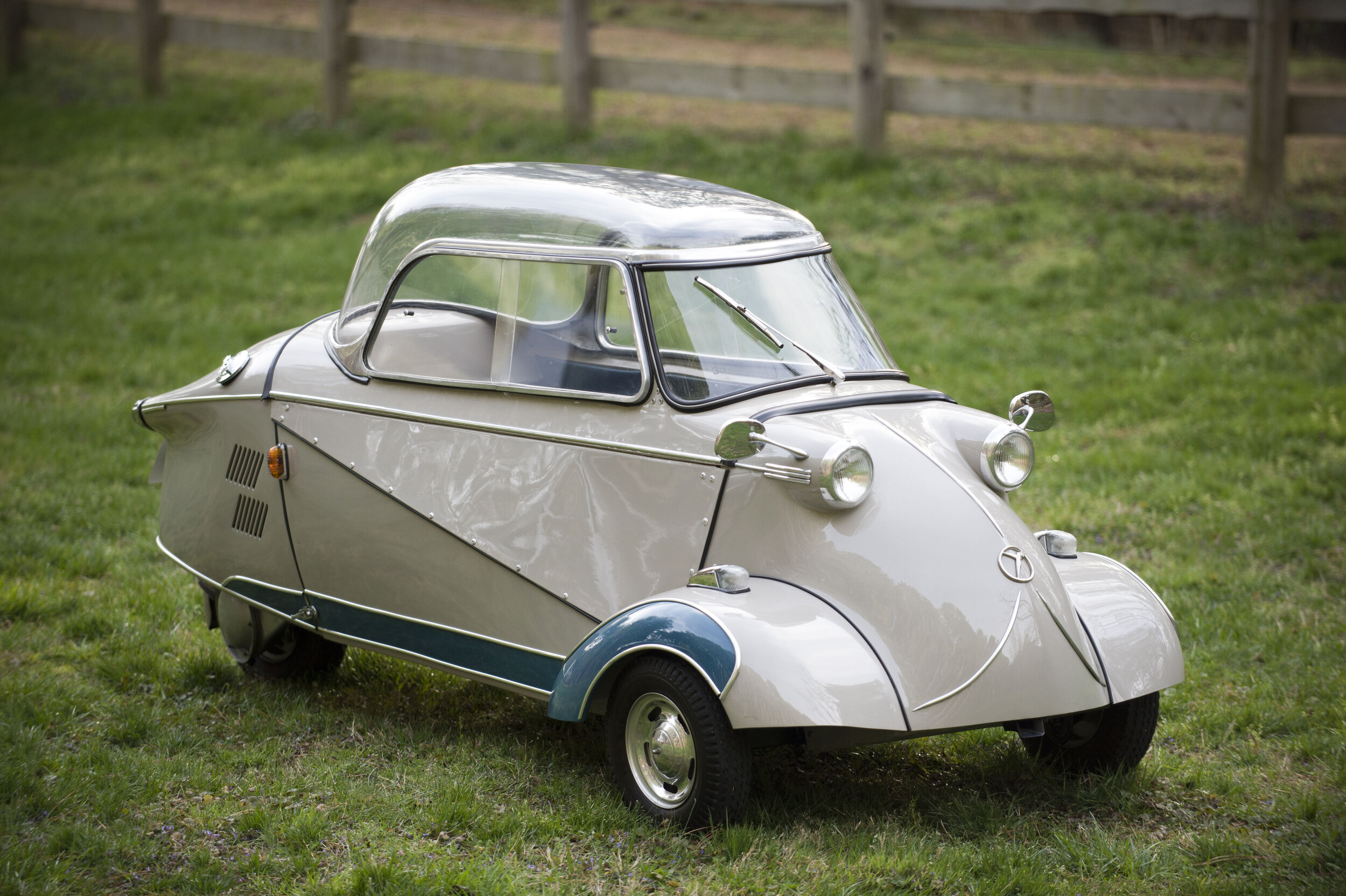1959 Nash Metropolitan
Specifications
Engine: 1489 cc Inline-Four Cylinder
Horsepower: 47 @ 4100 RPM
Torque: 74 lbs/ft @ 2100 RPM
Transmission: Three-Speed Manual
Born during an era when the United States was fixated on bigger and bolder automobiles, the Nash Metropolitan refreshed the American recipe for daily transportation. Typical American cars from the 1950’s featured an array of colors with usually a two-tone scheme. The Metropolitan aimed to mimic designs of the time while shrinking the scale of the vehicle. Nash felt that the small car market was being largely ignored in the United States, and in turn the company looked to designer William J. Flajole to construct a prototype of a mini car in order to gauge public interest. The code name for the project was NXI, or Nash Experimental International, and solely aimed to gain feedback from others in the industry.
The prototype was unveiled with great public response, though many insisted that with such a small car, it must be very cheap to purchase, as much larger American-built cars were not on the expensive end of the spectrum. To achieve the lowest production costs possible, Nash looked for a company with established small car expertise to build a car based on their design. Nash looked no farther than Austin of England to manufacture the Metropolitan.
With its manufacturing arrangement with Austin, Nash avoided the expense associated with tooling, body panels and components. Austin in turn worked with Fisher & Ludlow to produce body parts, while Austin assumed responsibility for the assembly. Underpinning the car were the tried and trusted Austin mechanicals, ensuring that, at least from a reliability point of view, the US market would have little cause for complaint.
Production of the Metropolitan began in October 1953 at the Austin plant in Longbridge, England. The car was available with the choice of convertible or hardtop, and featured accessories that were seen as luxury items at the time, such as a map light, electric windshield wipers and a continental style rear mounted spare tire and paint matched cover.
Nash had nailed their recipe. Americans were not necessarily longing for small cars, though Nash found a way to create an appealing product that all typical American car buyers would feel comfortable bringing home. Production continued for nearly a decade until interest declined in 1962, but not before they had sold more than 90,000 Metropolitans. Nash had drawn the attention of the major American automobile manufacturers, and it was not long before Ford, General Motors and Chevrolet all were producing sub-compact vehicles.


